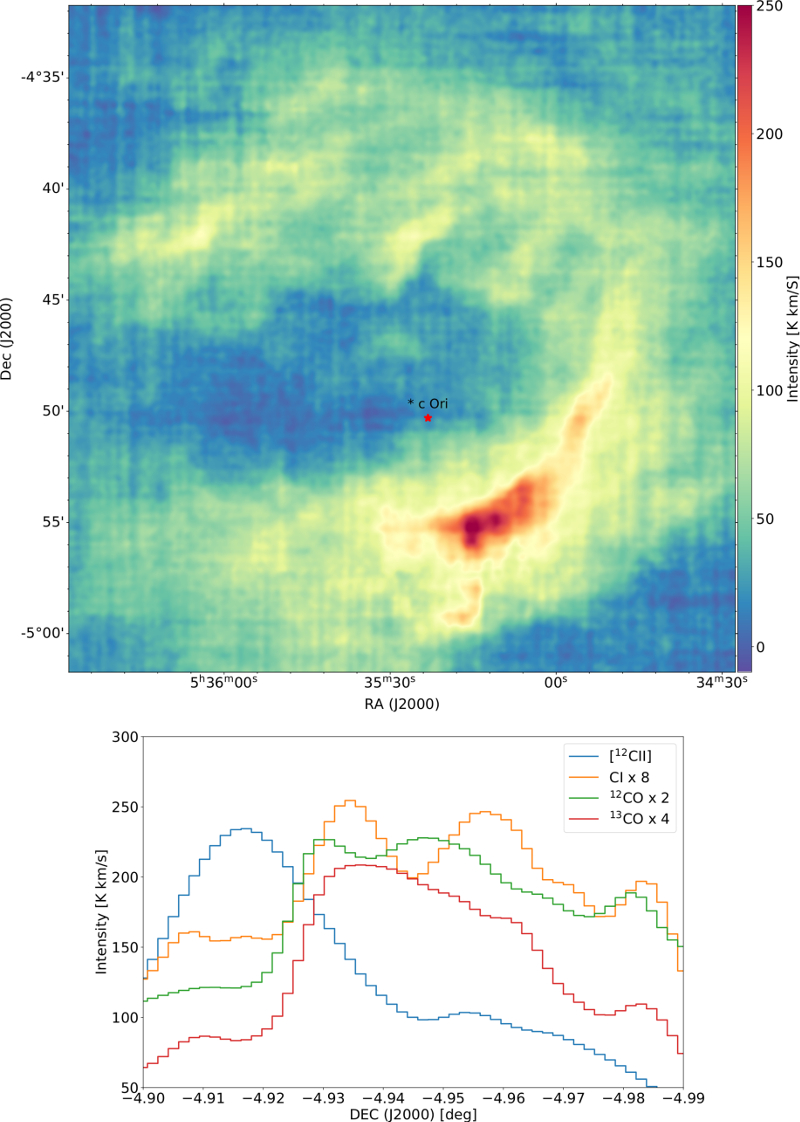| EPoS Contribution |
|
Modelling the clumpy PDR NGC 1977
Craig Yanitski U Koeln, Koeln, DE | |
| Accurately modelling photon-dominated regions (PDRs), the interface between an ionised hydrogen region and a cold molecular gas cloud, remains in ambiguity. Recent observations with SOFIA exhibit a clear chemical stratification in NGC 1977, making it a good test-case to study some of the defining characteristics of PDRs such as chemical stratification. It also leads to insights about both its geometry and the primary source of the far ultraviolet (FUV) field. The surface intensities from these observations are used with information on the mass distribution and kinematics of NGC 1977 to create a three-dimensional model using an extension the KOSMA-tau PDR code that accounts for the clumpy PDR structure with a probabilistic approach. This allows us to constrain its shape, orientation, and chemistry. By comparison to the observed chemical abundances, we comment on the physics at play in NGC 1977 and the chemical evolution within the Orion Nebula. | |
 | |
| Caption: A view of the stratification in NGC 1977 by Kabanovic et al (in prep). (Above) A view of the Orion Molecular Cloud 2/3 region with SOFIA. The red region on the lower-right of the figure is the PDR NGC 1977. It is dominated by FUV radiation from the B star * c Ori, identified with a red star. The orientation of NGC 1977 in relation to * c Ori make it a good example of how the FUV field affects chemical abundances. (Below) A view of the observed chemical intensities in NGC 1977 radially from * c Ori (adjusted for clarity). There is a clear layering the peak intensities of each species, in accordance with the PDR theory. This supports the hypothesis that * c Ori is the primary source of FUV in NGC 1977. | |
| Collaborators: S. Kabanovic, U Koeln, DE V. Ossenkopf-Okada, U Koeln, DE J. Stutzki, U Koeln, DE |
Suggested Session:
Chemistry |

